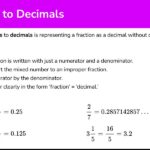Horsepower. It’s a term thrown around constantly, especially when talking about cars. We know more horsepower generally means a faster, more powerful vehicle. But have you ever stopped to consider the literal meaning behind the term? Where did “horsepower” come from, and does a horse actually possess one horsepower? Let’s delve into the fascinating history and science behind this unit of power and uncover just how much horsepower a horse can truly generate.
The Origin of Horsepower: A Unit Born from Steam Engines
The concept of horsepower wasn’t dreamt up in a stable; it was actually conceived in the late 18th century by Scottish engineer James Watt. Watt, renowned for his improvements to the steam engine, needed a way to market his invention. Steam engines were a new technology, and potential buyers, primarily those using horses for labor, needed a relatable comparison to understand the engine’s capabilities. Thus, horsepower was born as a unit to quantify the power output of these revolutionary machines in terms that horse-powered industries could grasp.
Watt defined horsepower by observing the work of draught horses, the workhorses of his time. He estimated that a typical horse could turn a mill wheel, 24 feet in diameter, approximately 2.5 times per minute over a standard workday. Power, in physics terms, is the rate at which work is done. Work itself is calculated by multiplying the force applied by the distance traveled. Watt calculated the force a horse exerted and, from that, determined the power.
To simplify things and create a memorable, slightly overestimated figure, Watt rounded his calculation. He defined one horsepower as the power required to lift 33,000 foot-pounds one foot in one minute. In modern units, this is equivalent to approximately 746 Watts (W), the metric unit of power named after, you guessed it, James Watt himself.
Interestingly, alongside Watt’s definition, there’s also the concept of metric horsepower, often used in the automotive industry. Metric horsepower is slightly different, defined as the power needed to raise a 75-kilogram mass against gravity a distance of one meter in one second. This equates to about 735 Watts. While subtly different, both definitions are rooted in Watt’s original attempt to quantify power in equine terms.
Actual Horsepower of a Horse: Beyond the Myth
So, was Watt’s estimation accurate? Remarkably, yes. His definition of one horsepower closely aligns with the average sustained work rate of a healthy draught horse over a full working day. Historical data, including observations from the 1925 Iowa State Fair and writings of veterinary surgeon William Youatt, corroborate Watt’s initial assessment. For sustained, all-day labor, a horse genuinely operates at around one horsepower.
However, horses are capable of much more than just one horsepower, especially for short bursts of exertion. In a 1993 letter published in Nature, biologists R. D. Stevenson and R. J. Wassersug explored the peak power output of a horse. Based on studies of muscle physiology, they estimated that the maximum sustainable mechanical power per kilogram of muscle is between 100 and 200 Watts. Using the lower end of this range, they calculated a theoretical peak performance for a horse to be around 18,000 Watts, or a staggering 24 horsepower!
Analyzing real-world data from the aforementioned 1925 Iowa State Fair, Stevenson and Wassersug found that horses could indeed achieve impressive peak power outputs. Their calculations indicated that a horse could exert up to 14.9 horsepower for a brief period. This is significantly higher than the sustained one horsepower and demonstrates the impressive muscular capabilities of these animals for short bursts of intense activity.
Therefore, while a horse is defined as having “one horsepower” in the context of Watt’s historical definition of sustained work, they are capable of generating significantly more – up to and possibly beyond 14.9 horsepower – when exerting themselves maximally for short durations. The term “horsepower,” while originating from the observation of horses, has become a standardized unit of power applicable across various machines and engines, even if the actual power output of a horse is far more dynamic than the single unit suggests.
